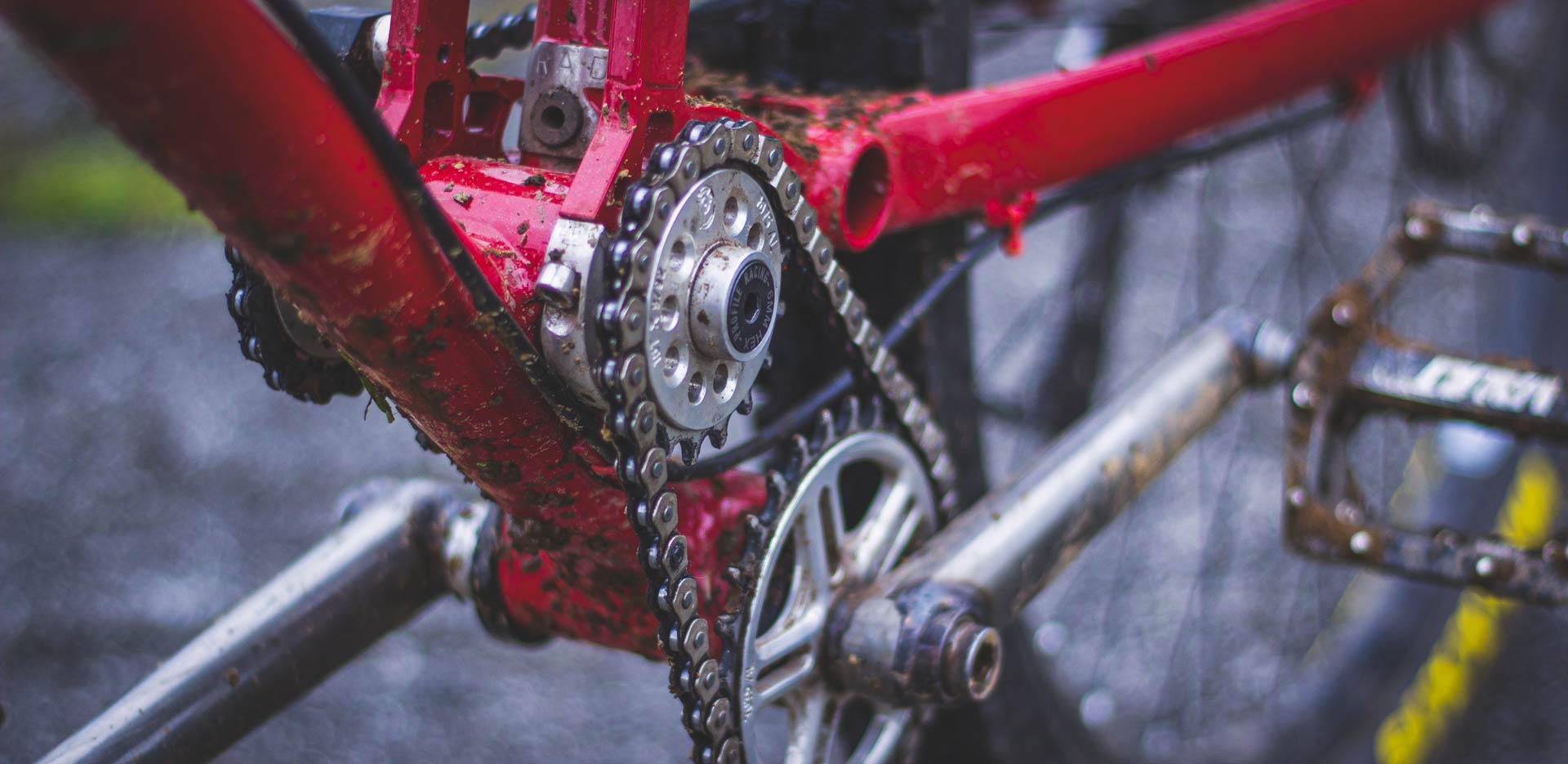
Starling Cycles Staer
HIGH PIVOT PROTOTYPE
Words by Robert Johnston
Photos by Findley Forrest & Nico Turner
When it comes to testing bikes, few things conjure up more excitement than the opportunity to test a prototype machine, especially when there’s some outside-the-box thinking involved in its design. When Starling cycles uploaded a video introducing their latest creation – a 170mm travel steel 29er using a unique high jack pivot (explained below) – I had to have a go. Luckily, after testing Starlings’ production Murmur 29er, I had built a rapport of sorts with owner Joe, who kindly agreed to lend me this prototype model for a few weeks thrashing all over the UK. Since testing, Joe named this prototype the “Staer,” the Old-English word for a Starling bird.
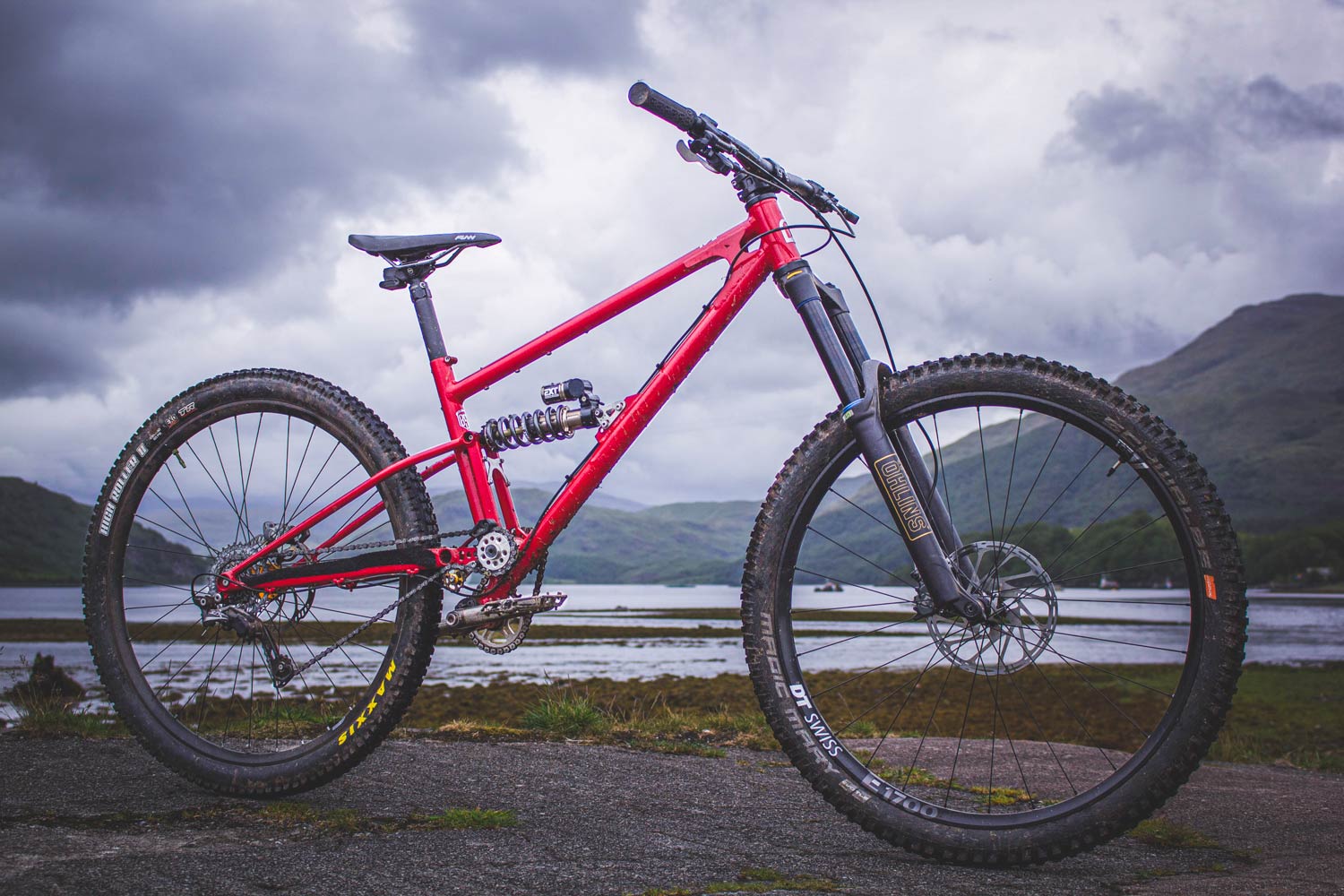
THE LAB
So let’s get to the bike, and what makes it so special. Joe is not afraid to admit that the inception of this machine was a result of an error whilst attempting to fabricate a frame suitable to accept an effigear gearbox (look out for that bike soon). A mistake in the order of some machined parts required to accept the gearbox resulted in Joe having a collection of steel bits that weren’t suitable. The idea popped into Joe’s head that an “enduro” version of his Sturn downhill bike could be made possible utilizing these machined bits, and so the Staer was born. As with all Starling bikes, the frame is constructed from a collection of steel tubes of various alloys, selected for their optimal properties in each frame area.
Whilst the pivot point on the Staer prototype is not super high, such as on the Commencal Supreme DH V4, the design principles and functionality share similar traits. By positioning the pivot point above the chain line, the movement of the rear wheel in the initial part of the travel becomes primarily rearward. In theory, this allows the rear wheel to move out of the way of obstacles with less resistance, but the effectiveness of this is not entirely clear. What is unarguable however is the stabilizing effect that this rearward movement has, as the wheelbase extends for a considerable portion of the suspension travel. Stability when you’re under compression, such as pushing hard through a berm or coming through a g-out, can only be considered a good thing, allowing limits to be pushed a little harder with reduced risk of an uncontrolled wobble.
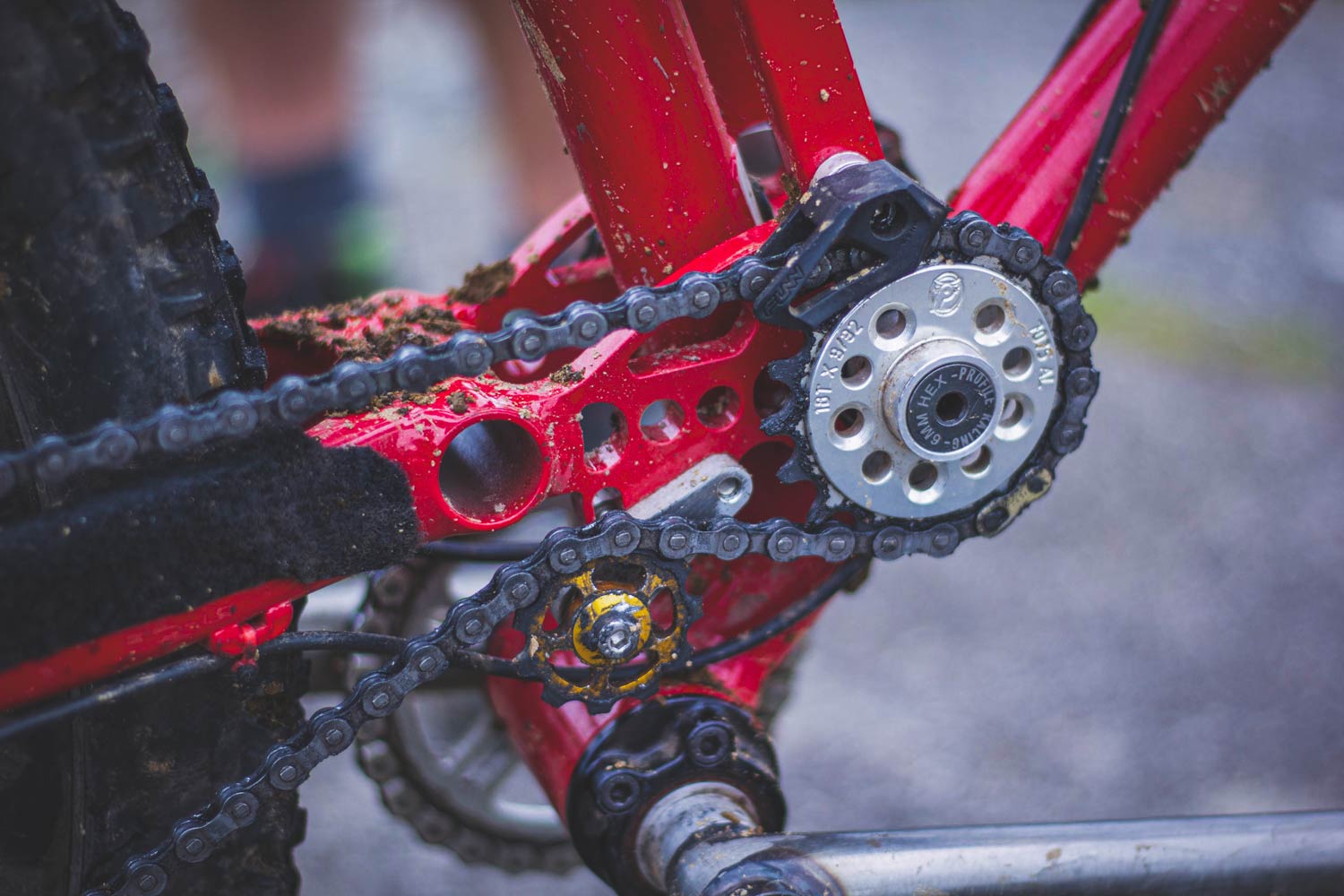
The downside to this extending rear end is that the chain is then put under a lot of tension (known as chain growth), which can be felt as a kickback force through the pedals. This effect will reduce the ability of the rear end to conform to the trail, and likely undo any positive effect of the high pivot positioning. To resolve this issue, an idler system can be used. By positioning a cog on the same central axis as the suspension pivot, and routing the chain over this cog, the chain growth is eliminated, and the rear end is left free to react without the effects of the chain forces. What makes the Starling truly unique is the execution of this idler system – the jack pivot. A left-hand drive Profile Racing bmx crank is used, driving a bmx half-link chain on to a cog on the left side of the pivot. An axle, free to rotate, solidly connects this left cog to an identical cog on the right side. Finally, a second, geared chain runs from this right side cog to drive the rear wheel. Complicated to look at, but very simple in operation. To allow for the left side chain to be tensioned sufficiently, an eccentric bottom bracket is used: allowing for some movement of the crank axle; and some extra tuning of effective bottom bracket height and the front-rear length ratio.
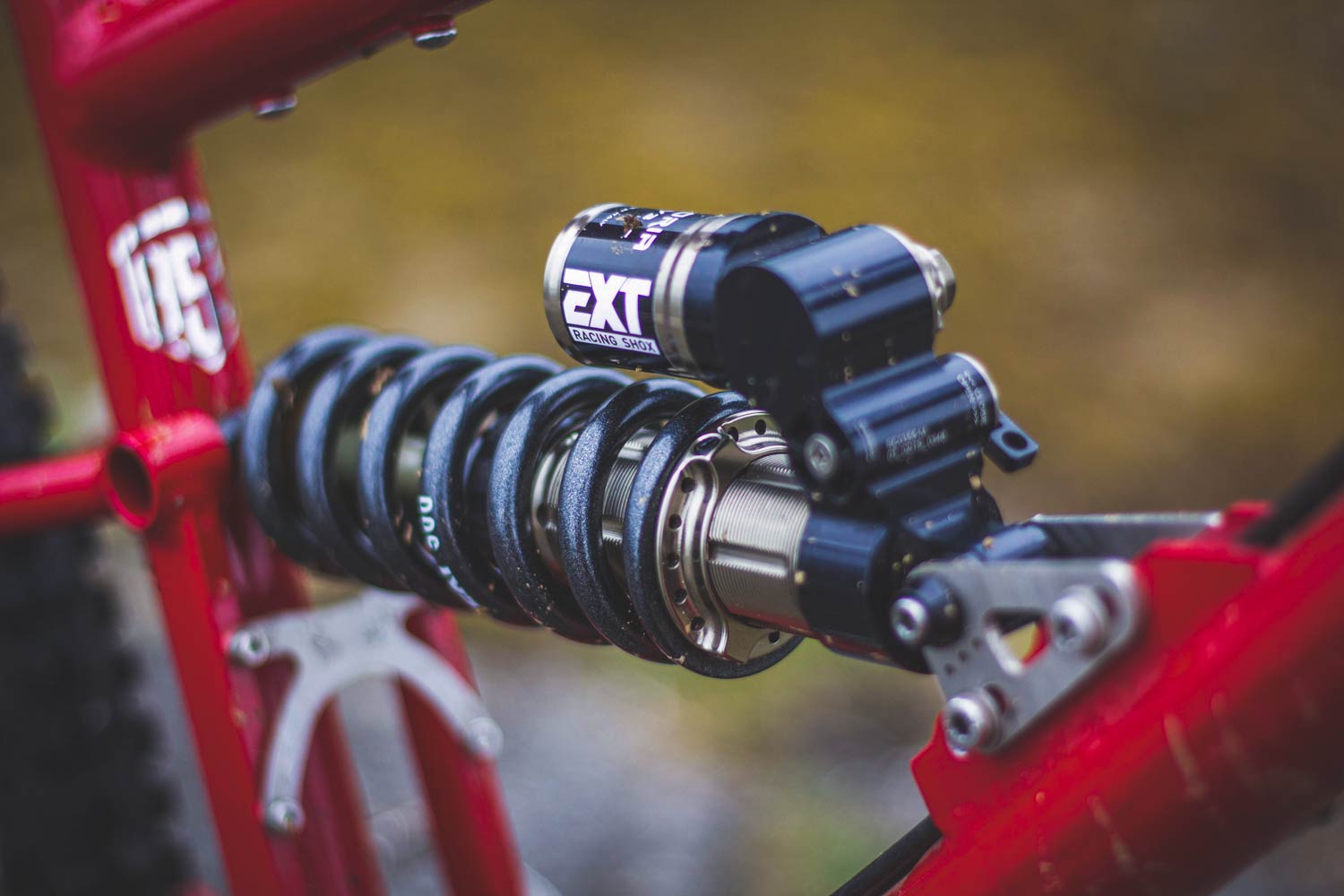
Geometry of the Staer as standard is in keeping with the times, but far from the most extreme that Joe has experimented with – a 64 degree head angle, 73.8 degree effective seat angle, 475mm reach and 450mm stays combine to produce a stable package, without getting into ultra long and slack territory. During testing, the bike was fitted with a headset that slackened the head angle by 1.5 degrees, pushing the head angle well in to downhill bike territory at a raked out 62.5 degrees.
An EXT Storia rear coil shock and Ohlins RXF EVO coil fork made for some seriously supple suspension off the top, with high quality tuneable damping that offered a huge range of set up options. Chris Porter, the extremely knowledgeable director of Mojo Rising and renowned bike fettler, provided a great help in getting the rear shock set up to perfection, resulting in a 500lb spring rate being supported by 5 clicks of low speed compression and 7 clicks of high speed compression. Each click on the Storia shock makes a noticeable difference, perhaps accentuated by the simplicity and free-moving nature of the single pivot rear end – finding a balance between steering and stability involved some focused set up on a single piece of familiar track, but following Chris’ guidance resulted in some noticeable improvement over an afternoon of set up. Chris offers this wisdom to anyone purchasing an EXT shock from Mojo Rising – really adding value to the service.
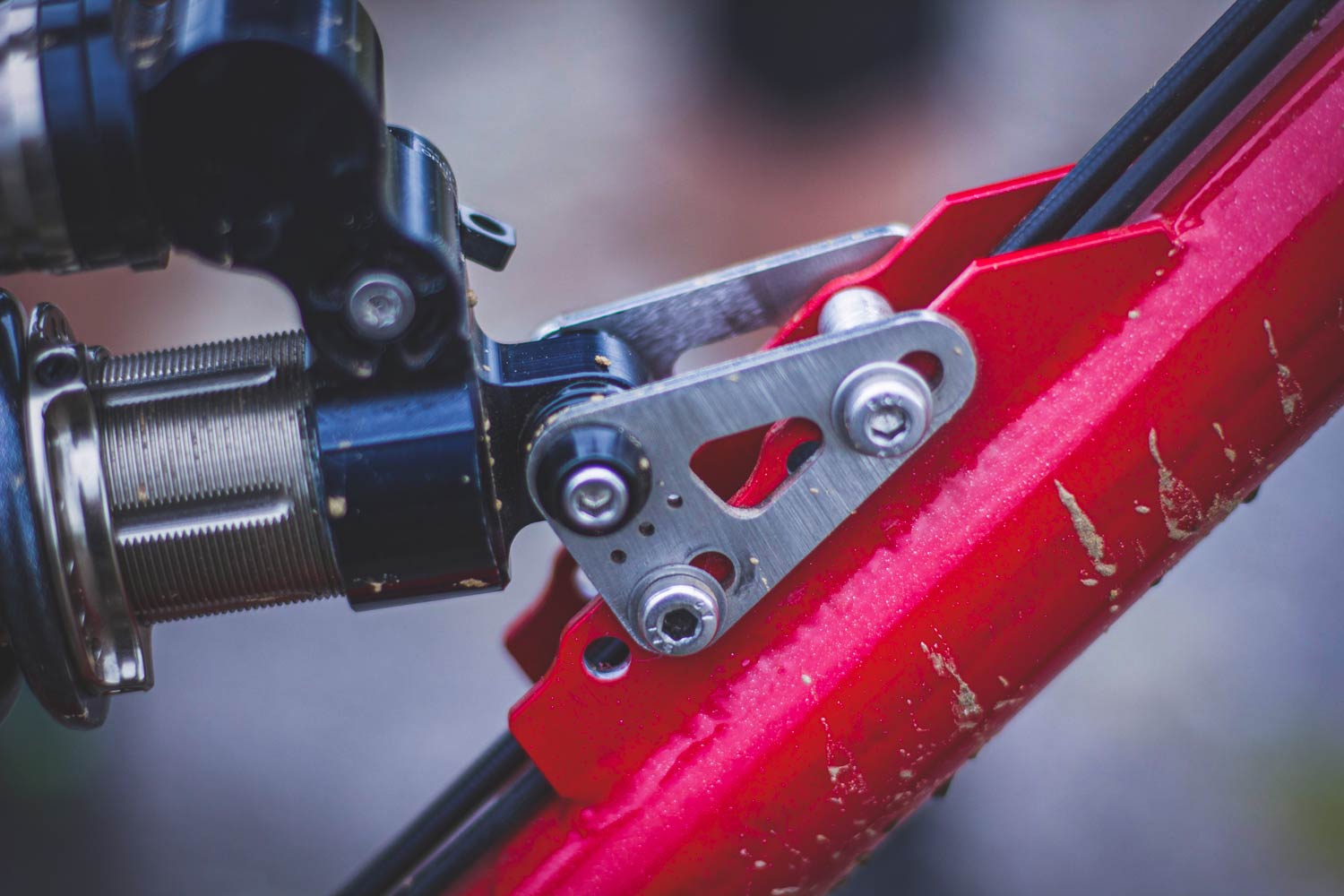
Joe had the Staer set up with a single-speed Project 321 rear hub and cut down 10 speed cassette to make a 5 speed cluster on the rear, offering an 11-36 gear spread. When mated to the 28t front cog, this produces a similar low gear to the 11 speed set ups that were so common just a couple of years ago, before the eagle soared to the top. It was manageable, though certainly didn’t offer the low speed leg-spinning capabilities of the gear systems that are now common place. Gear shifting wasn’t good with this set up, since the synchronized shift ramps on each of the 5 cogs had lost their sync due to the missing gears in between. The mindset of running the bike single-speed on the downhills was necessary to avoid the dreaded “skip” as a cog jumps unexpectedly to the next gear when under power. A normal rear wheel and 11 or 12 speed gear system could be fitted to this machine to produce a more normal ride in this respect, though there is definitely something to be said for keeping your thumb off the shifter on a descent and getting on with the gear you’re in.
Braking and seatpost duties were the task of the Magura MT5 brakes and the Vyron wireless dropper. The performance of the brakes was nothing short of outstanding, without a single hint of fade or changing feel throughout testing – just gobs of well modulated power. The Vyron dropper had issues however, and was replaced by a 9point 8 Fall line dropper that is also being tested for a feature coming soon.
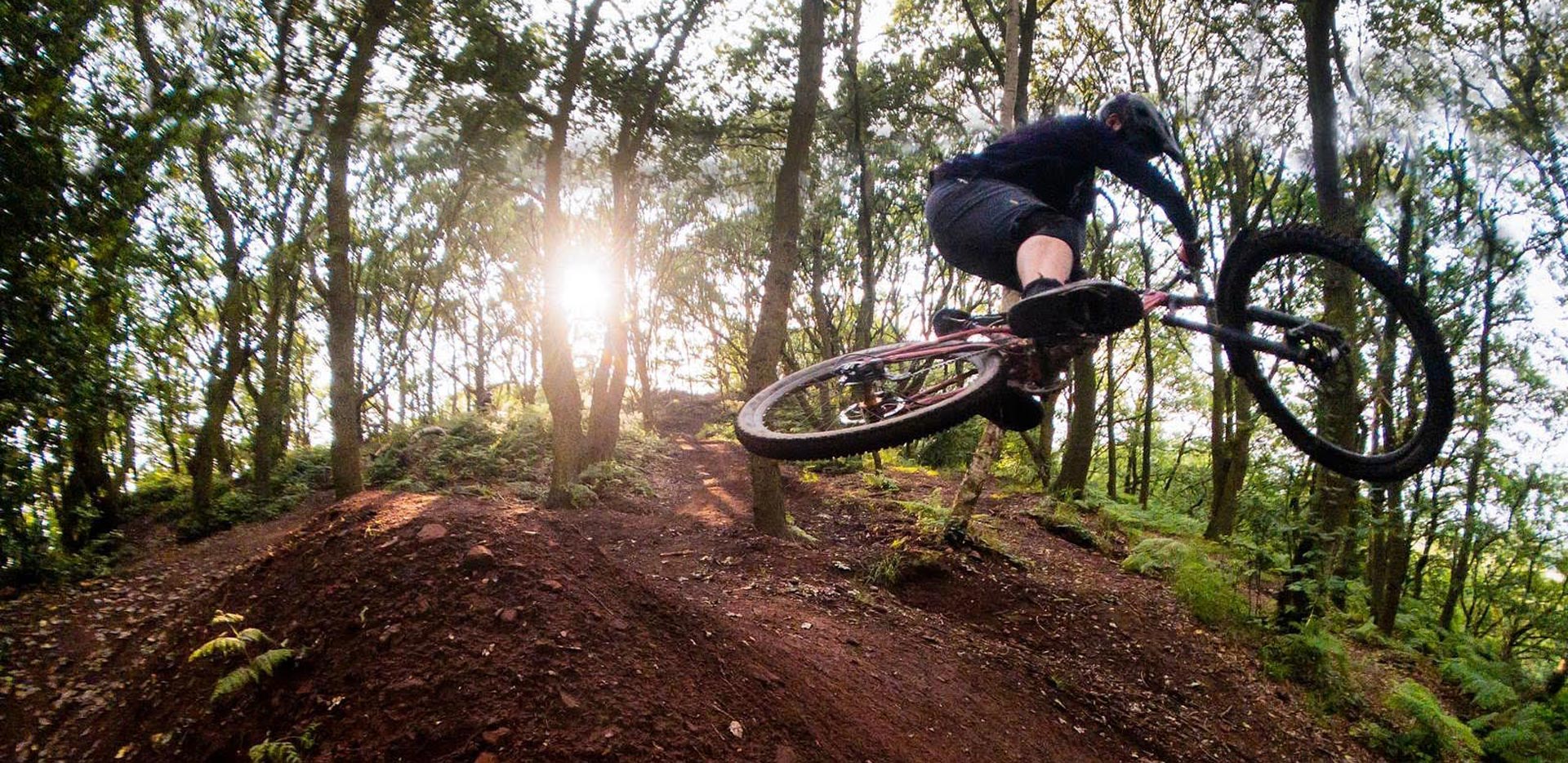
THE DIRT
I suppose by now you’re wondering, how does the bike perform? Lets just say Starling should call this bike the “tough”, because when the going gets tough, the tough get going. If you only ride flat, groomed trails then please don’t consider this bike as an option when you come to purchase your next rig. This bike demands the steepest, fastest and chunkiest terrain that you can muster before it begins to make sense. However, give it this demanding terrain, and its ability to carry speed through the rough and the confidence offered by its stability is exceptional – this truly is a downhill bike that can be pedaled back up the hill. Unfortunately, there is a penalty to pay for this, in the form of its weight – 36lbs with its no-nonsense build – and the pedal bob that results due to the reduced anti squat as a bi-product of the idler system.
What that idler system undoubtedly benefits is the rear end – it is remarkably free to move, and hugs the ground in an impressive manner. Roots and rocks beneath the tires disappear, letting you look well ahead and focus on the next turn rather than worrying about picking your way delicately down the trail. Through the pedals comes next to no force thanks to the lack of pedal kickback, even with the ultra fast engaging rear hub.
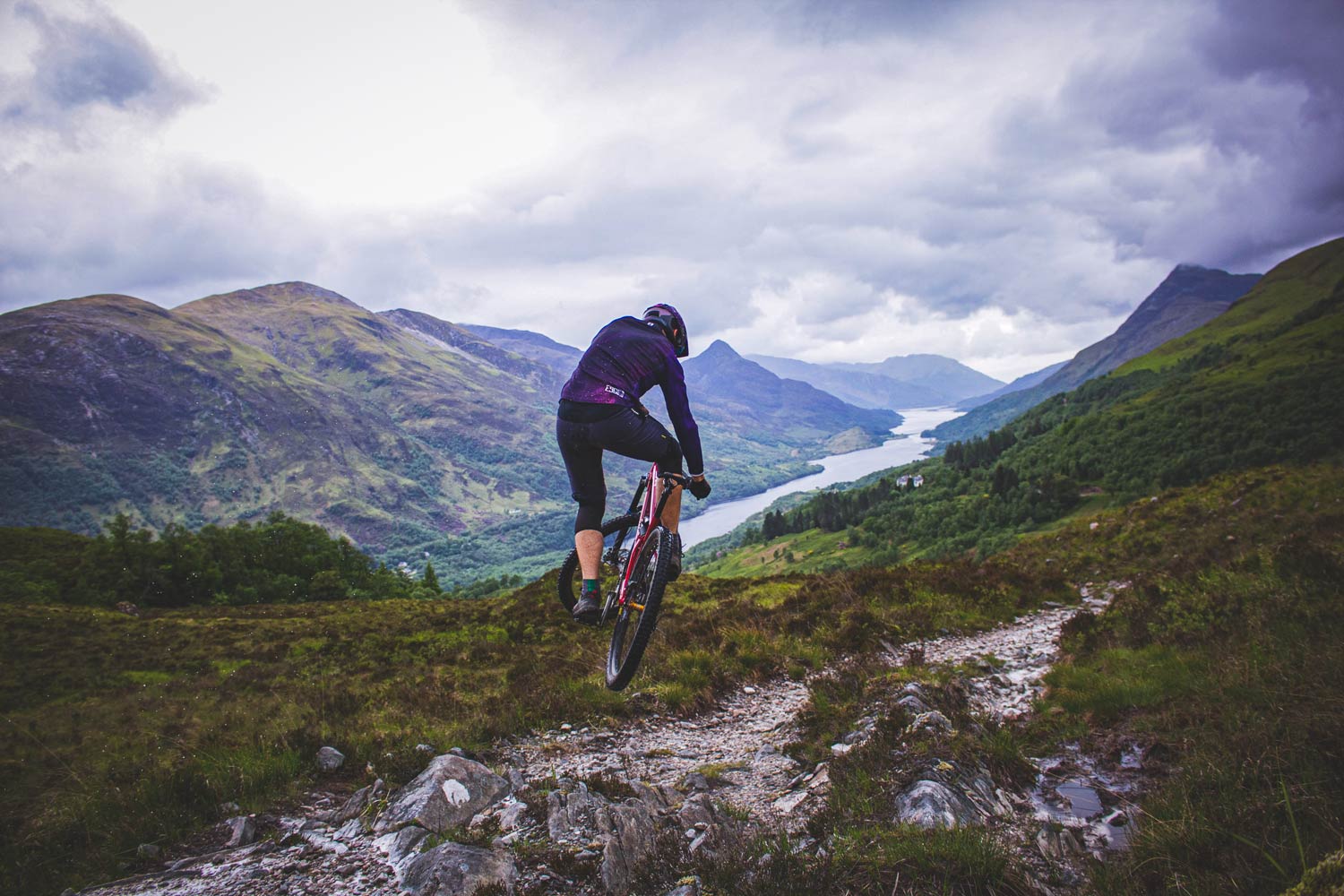
Seated climbing position was comfortable with the seat slammed forward in the rails, and the relatively slack seat tube angle meant the seat was really out of the way when slammed. The seat angle on this frame was restricted by the machined parts, but production models would have a preferable 77 degree seat angle, which would help the climbing position further. Since the reach of this frame was slightly shorter than I would normally ride (with the length instead coming from the raked-out front end), the climbing position felt very centred between the wheels. The long chainstays help to weight the front wheel when seated, reducing the amount of user-input required to keep the front wheel planted, and generating substantial traction out the back. For a bike with these intentions, the long stays make a great amount of sense.
Riding this beast at a UK enduro race, there were moments of brilliance followed by some of the most fatiguing riding I’ve ever done. When the trail flattens out, pumping doesn’t produce the same speed as on other vessels, and pedaling power is noticeably absorbed by the suspension action instead of creating forward movement. Weaving a bike this slack and stable through tight trees was a fatiguing affair, requiring a great deal of power to pull it from side to side across the trail. On the other hand, when you’re running on fumes and ready to collapse at any moment, the self-righting ability of the bike can really pay dividends, and you can focus that little bit less on keeping it going in a straight line through janky terrain. Grip is admirable in almost every situation, from scrambling up technical climbs to getting hard on the anchors through clusters of off camber rocks and roots. The one struggle that was faced initially was weighting the front wheel sufficiently through flat turns. The slack head angle puts that front wheel way out in front of the bars, and it took a lot of focus to get my body weight pushing down hard through the grips to make the front end hook up. A bit of suspension fettling to get the rear end to sit up a little higher improved this, and by the end of testing I had sufficient confidence in holding it wide open through turns of all types.
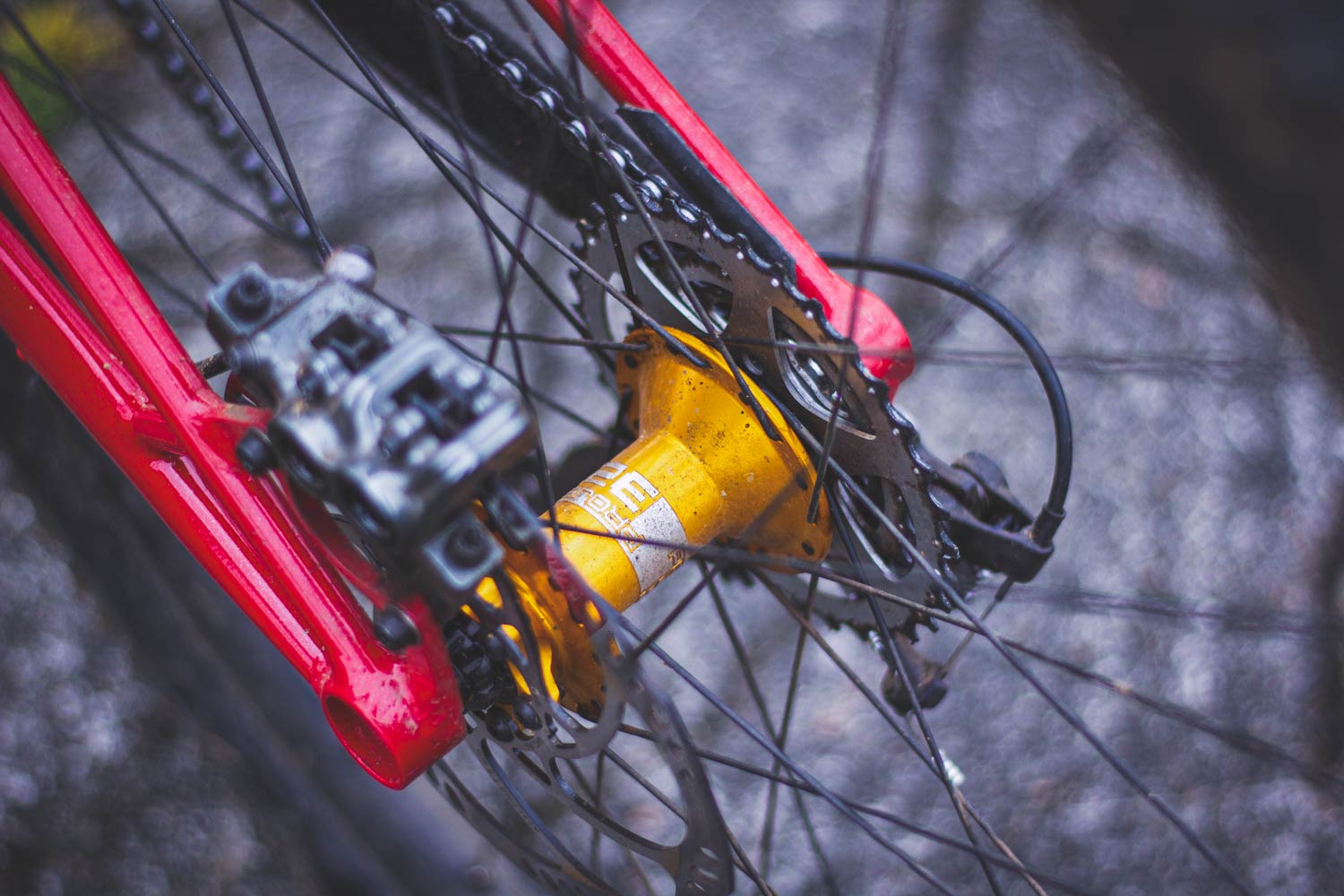
There was one section of trail where the merits of the ultra slack head angle really stood out to me. On the steepest track I’ve ridden in a long time, with corners that require long bikes to be nose/endo/euro-turned, the safety that the raked out front end provided was remarkable. Because that fork is at such an angle, you feel like it’s nearly impossible to lean too far over the front – It added a great deal of comfort to an otherwise terrifying trail.
It may not come as a surprise that this bike requires a little bit more input to get properly airborne off of smaller lips, and that the slack front end and long rear end don’t quite lend themselves to a bike that is easy to whip around in the air. Give the Starling proto a lip of decent size and a good entry speed, and nothing weird happens however, with a predictable nature. It prefers a low and fast approach rather than a bmx-like ‘pop’ – this is a race focused machine, but a skilled jumper will still manage to throw it around with a little extra muscle.
As a prototype bike, there were a couple of items of hardware that could have been improved, and Joe suggested prior to testing that the bolts for the cross brace on the rear end could do with some Loctite. But, after the first instance of the cross brace coming loose, there were no repeats of this for the rest of the test. Having to maintain a second chain and set of cogs was about as much effort as you would expect. It’s just an extra step in the clean and re-lube process, but adds no real time. Over the bikes lifetime having to replace these cogs would add slight maintenance costs, but because they always run perfectly aligned, it’s likely the left chain will greatly outlast a geared chain. The extra drag of the second chain was minimal, with the cranks still spinning relatively freely.
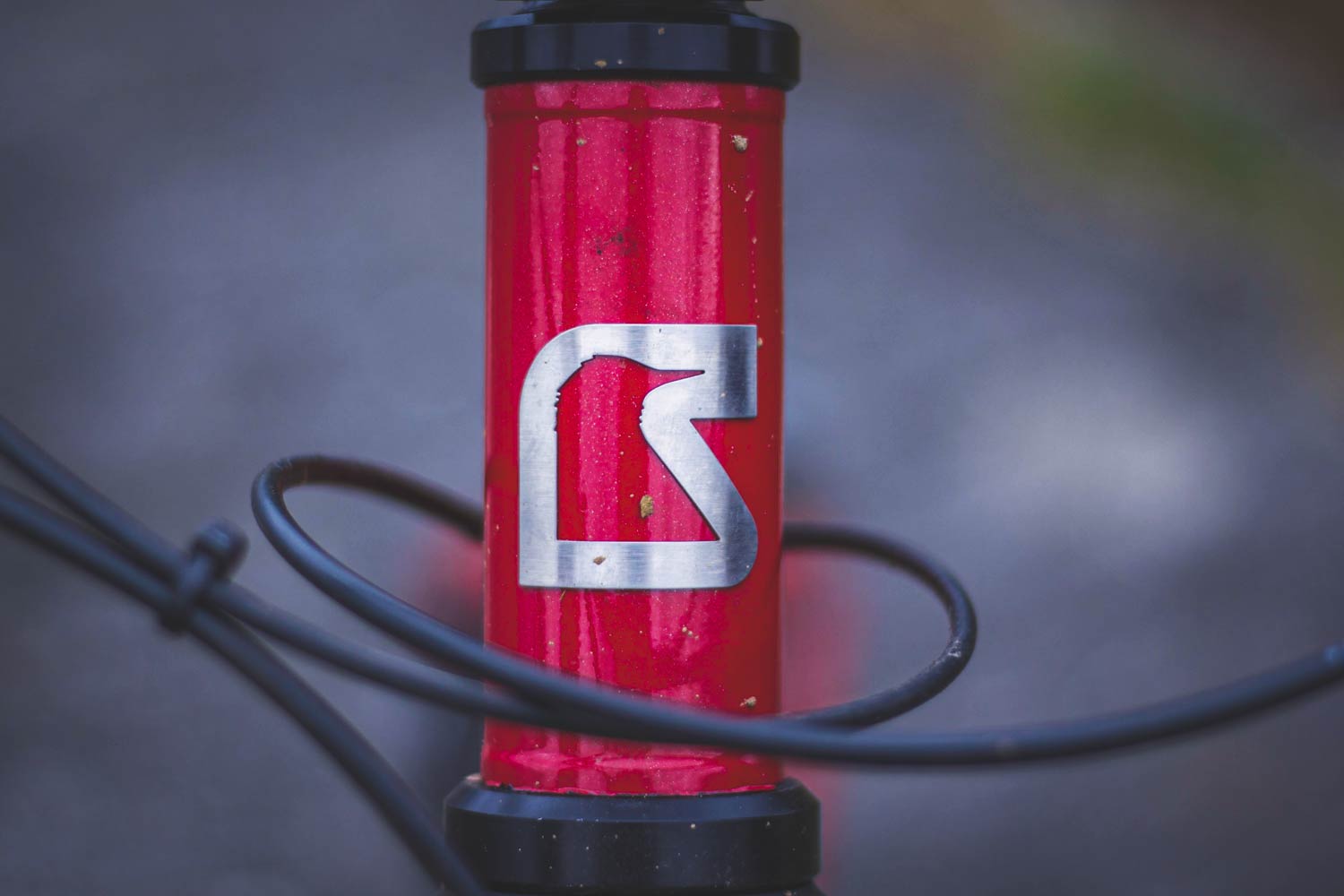
The Wolf’s Last Word
If your local trails warrant a downhill bike, but you want to forego the uplift and get up the hill under your own power, then the Starling Staer high pivot would be seriously worth considering as your next rig. This is not a bike that will appeal to the masses, and it certainly won’t help your chances of winning in the pedalier enduro races. But if you seek a stable, bump gobbling machine, and thrive on trucking through the most gnarly terrain, then this is quite the tool for the job.
When asked whether the Staer would ever be made available to the public, Joe said, ”We need to work on a couple of details, but once that’s sorted, I’m happy to build for anyone who’s interested.” So if you want one of these special rigs, then head to Starlingcycles.com and get your request in!

We Dig
Bump Eating Ability
Stability at Speed
Steep Terrain Confidence
Idler System Engineering
We Don’t
Pedaling Efficiency
Limited Agility
Overall Weight
Leave A Comment & Win Free Schwag
Want to win some free schwag? Leave a comment and vote up the most thoughtful comments and each month we’ll pick a winner. The person with the smartest and most helpful replies will earn some sweet new gear. Join the Pack
